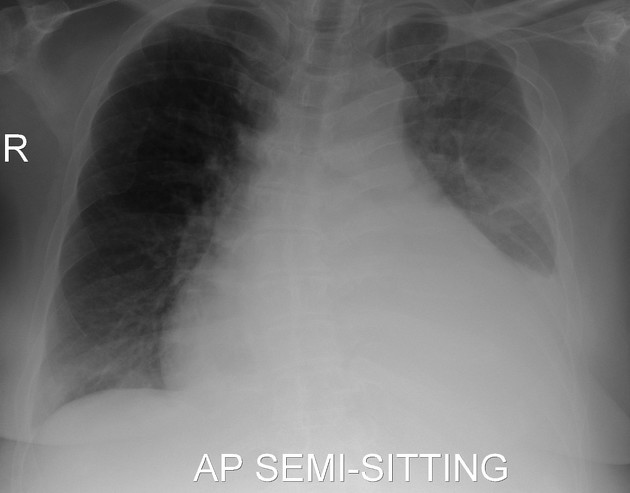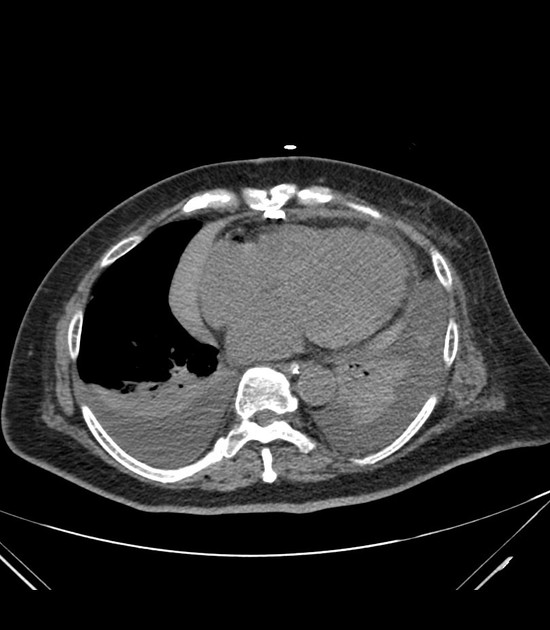Presentation
This patient recently underwent intravenous thrombolysis for an acute ischemic stroke. She was admitted 3 days prior for an acute myocardial infarction with ventricular tachycardia. She presented with hypotension during admission. Echocardiography showed a massive pericardial effusion.
Patient Data

The cardiac silhouette is markedly enlarged consistent with massive pericardial effusion.
Left-sided pleural effusion and subsegmental atelectasis are also demonstrated.

There is a dense (+65 Hounsfield units) pericardial fluid collection consistent with hemopericardium.
A drain is seen inserted at the subxiphoid region with its tip positioned in the anterior pericardial space.
Bilateral pleural effusions with atelectatic changes in both lungs are also demonstrated.
Case Discussion
Hemopericardium is a known, but rarely reported, complication of thrombolytic therapy. In this case, the acute ischemic stroke patient has an underlying myocardial disease that posed a risk for hemopericardium and life-threatening cardiac tamponade after thrombolytic therapy.
A subxiphoid pericardial window relieved the tamponade, and the patient made a good recovery.




 Unable to process the form. Check for errors and try again.
Unable to process the form. Check for errors and try again.